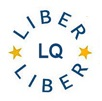On the importance of recording microforms and digitised versions produced for preservation on the international level, with a focus on standards
DOI:
https://doi.org/10.18352/lq.7725Abstract
When we think about preserving our cultural heritage the first thing that comes to mind is how to find ways to properly store and protect the original works of art, literature and science. Our aim is to save them for our time and for generations to come. We wish to restore them in such a way that their original structure and content is respected and remains unaltered while the material is strengthened to withstand the pressure exacted by use, climate and many other hazards. Very notable aims. Reality, however, is quick to bring disillusion. User demand far exceeds our possibilities to sufficiently prepare the original items or even to restore them diligently enough not to alter their originality. True restoration is bound to consume resources and time to such an extent that we cannot but treat only a relatively small number of items.Downloads
Download data is not yet available.

Published
2003-11-19
Issue
Section
Articles
License
Copyright (c) 2003 Werner Schwartz

This work is licensed under a Creative Commons Attribution 4.0 International License.
How to Cite
On the importance of recording microforms and digitised versions produced for preservation on the international level, with a focus on standards. (2003). LIBER Quarterly: The Journal of the Association of European Research Libraries, 13(2). https://doi.org/10.18352/lq.7725





